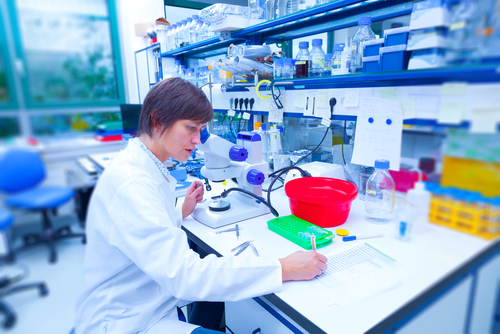Endometrial diseases can be modeled using cells in a dish, new research has revealed. Such models may allow for better understanding of the diseases — and for screening potential treatments, researchers say.
This advancement was detailed in the journal Nature Cell Biology, in a paper titled “Patient-derived organoids from endometrial disease capture clinical heterogeneity and are amenable to drug screening.”
Modeling human diseases in a lab dish is very difficult because, quite simply, the human body is complicated. For any given condition, there are many different biological factors and types of cells involved. Simply growing some cells in a dish makes for a poor representation of the real thing, researchers say.
This is where organoids come in. As the name suggests, organoids are intended to function as miniature versions of organs. They are made by growing cells in three-dimensional cultures so that they more closely resemble the structures and interactions found in actual human tissues.
“The organoids form ‘avatars,’ as it were, of the diseased tissue and can also be used to test the effect of drugs and new drug candidates,” Hugo Vankelecom, PhD, a professor at the University of Leuven, in Belgium, and co-author of the study, said in a press release.
In a previously published paper, Vankelecom and colleagues described their work in creating a new generation of organoids from healthy endometrium, the tissue that lines the inside of the uterus. The scientists used mouse and human tissue to establish the three-dimensional models.
In the new study, they used similar techniques to generate organoids from diseased endometrial tissue, including endometriosis and endometrial cancer. The researchers confirmed that these organoids maintained the traits — specifically, the mutations — similar to those seen in cells from these conditions in people. The organoids also grew into similar lesions when they were implanted in mice.
Furthermore, the researchers showed that the cancer organoids responded to chemotherapeutics in a patient-specific manner. That means that organoids made with different patients’ cells responded to different drugs. This is also what happens in real life — and it may have future implications for more precise and personalized treatment of endometrial cancer.
“In summary, we developed multiple organoid models that capture endometrial disease diversity and will provide powerful research models and drug screening and discovery tools,” they said.
Further study will show whether such tests can be of help in the clinical treatment of individual patients, they added.
“We now have a biobank of organoids from endometrium in healthy and diseased conditions. This can help us discover how an aberrantly functioning endometrium causes infertility and then look for treatments,” said Vankelecom. “Our new research model offers the potential to better understand and eventually treat uterine diseases such as endometriosis.”

